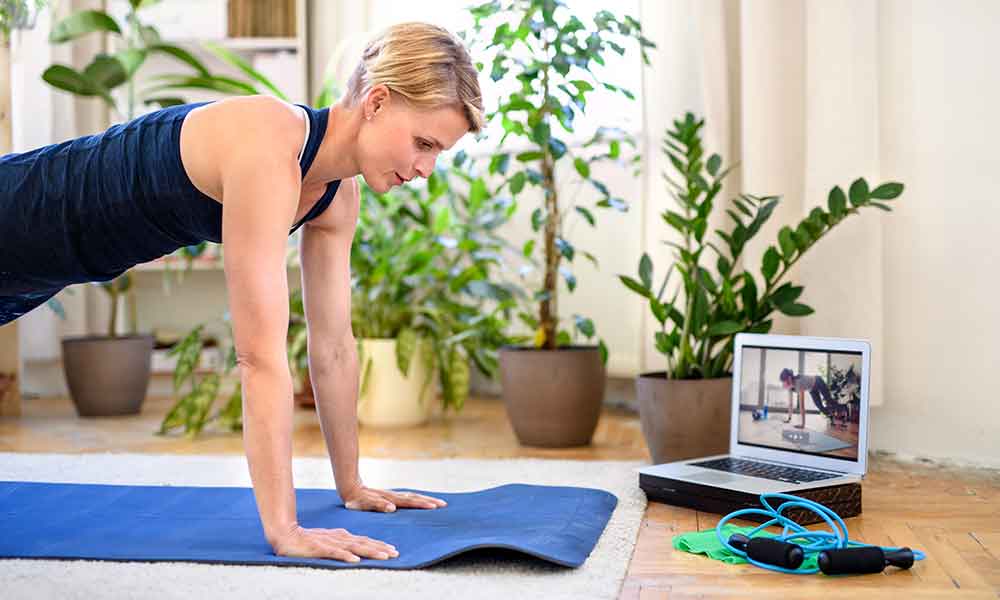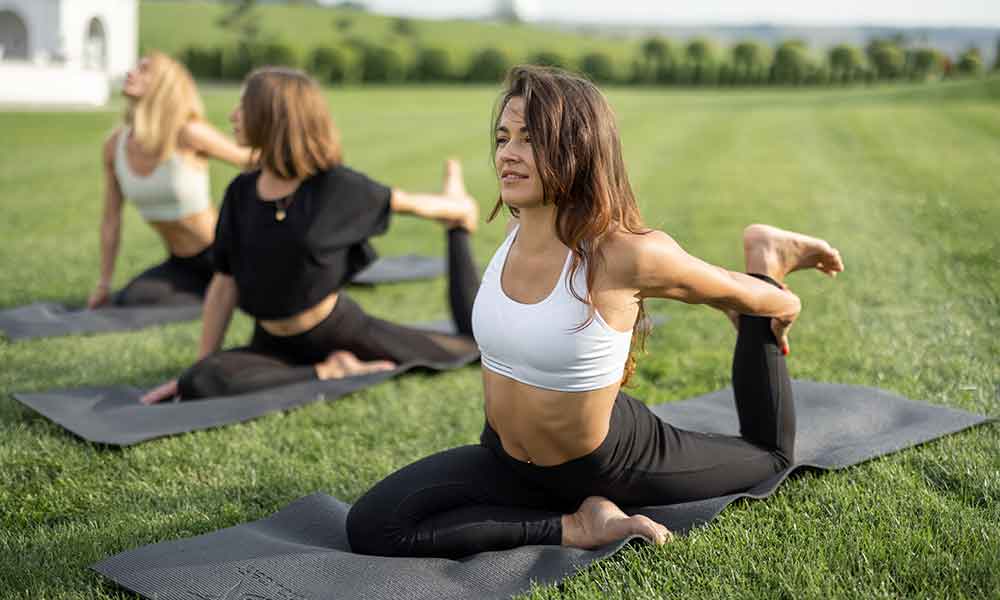Introduction
Staying physically active is now more important than ever. With our day-to-day lives more sedentary than ever before, it’s essential to make sure we are incorporating physical activity into our routines. Physical fitness can also help to reduce anxiety and stress and even increase productivity.
When seeking a physically active lifestyle, it’s important to focus on the components of physical fitness. This includes strength, agility, cardiovascular endurance, muscular endurance and flexibility. All of these qualities contribute to overall wellness and health.
In this blog post, we will explore the components of physical fitness and offer tips on how to stay physically active in a sustainable way. We will also discuss how you can use fitness activities to manage stress levels and improve your overall health. By exploring the various components of physical fitness, you can take charge of your health and create an individualized plan that works for you.

Components of Physical Fitness
The components of physical fitness refer to the five areas of fitness that are essential for good health. These five components are cardiorespiratory endurance (CRF), muscular strength and endurance, flexibility, body composition, and agility.
By training regularly and efficiently in each area, individuals can improve their overall physical fitness levels and reduce the risk of injuries. Regular exercise also helps to maintain a healthy body weight, manage stress levels, and increase overall energy levels.
Cardio-respiratory fitness (CRF) develops through aerobic activities including running, swimming or cycling. It is important for a strong heart and healthy lungs and helps the body to get rid of waste products such as carbon dioxide more quickly.
Muscular strength and endurance can be built up with resistance training activities such as lifting weights or using resistance bands. Flexibility can be improved through stretching exercises which help to increase range of motion in joints and muscles.
Proper body composition is a balance between fat mass and lean muscle mass, which is important for overall health. Finally, agility refers to the ability to move quickly with coordination, balance and control. This can be improved by doing drills that focus on these skills such as a ladder drills or cone drills.
How Being Physically Fit Can Be Sustainable
In an increasingly health-conscious world, physical fitness has become more essential than ever to staying healthy and living a quality life. A regular exercise regimen can have a profoundly positive effect on both the body and the mind — not just in terms of physical performance, but also in terms of achieving overall balance in life and daily routines. In order to maintain a healthy lifestyle, it is important to find ways to be physically active in a sustainable way.
Sustainable fitness is about incorporating fitness into one’s daily routine without overworking your body — that means focusing on quality and consistency over quantity. This could include taking regular walks or bike rides instead of hitting the gym every day, or opting for yoga and meditation sessions instead of running marathons. Additionally, sustainable fitness plans can incorporate natural resources such as sun, wind and water into exercise routines, which can help to reduce carbon emissions from transportation methods used for working out.
By adopting habits that lead to sustainable physical activity, you are able to maintain your physical health without compromising your mental health and other areas of life. With proper dieting and mindful training regimens—such as interval training exercises—you can keep your body fit while reducing stress levels – all while being kinder to the environment!

Benefits of Sustainable Development
Staying physically active in a sustainable way offers a range of benefits to both the individual and society.
Physical Benefits
The physical benefits of staying active include improved overall strength and endurance, increased energy levels, improved balance and coordination, and better posture. Regular physical activity can also help to reduce the risk of certain chronic diseases such as heart disease, diabetes, some cancers, and obesity.
Mental Benefits
In addition to the physical benefits, as exercise and physical activity are known to improve mood and reduce stress levels. Exercise releases endorphins in the body that help to boost self-esteem and aid in stress relief. Sustaining a physically active lifestyle can also help with mental clarity, focus and memory. All of these factors contribute to an improved quality of life.
Environmental Benefits
By engaging in sustainable physical activities, we can also have a positive impact on our environment by reducing pollution from transportation or excess electricity usage due to gym equipment or air conditioning. Sustainable forms of exercise such as jogging or cycling also require no extra materials or fuel sources.
Examples of Sustainable Development in the Fitness Industry
The fitness industry has embraced sustainable development practices, from the materials used to manufacture fitness equipment, to the way people exercise.
Many elements of physical fitness have been made more sustainable in recent years. For instance:
Low-Impact Exercises
Low-impact exercises such as yoga, Tai Chi and Pilates require minimal movement and reduce stress on joints. These activities are both low-impact and sustainable, as they use only bodyweight and can be done almost anywhere.
Recycled Materials
Fitness equipment manufacturers have started to incorporate recycled materials into their products, reducing their environmental impact while still providing quality gear. From skipping ropes made from recycled plastic bottles, to treadmills that use recycled rubber for their surface padding, the use of sustainable materials is becoming increasingly popular in the fitness industry.
Virtual Fitness Classes
Virtual fitness classes eliminate the need for commuting to a gym or studio and are an excellent way for people to stay active without having to leave the comfort of their home. By using virtual technology, instructors are able to provide detailed instructions in real time from any location with an internet connection – reducing emissions from transport and making exercise more accessible for everyone.
Eco-Friendly Approaches to Staying Physically Active
When staying physically active, it’s important to remember our environmental impact. Taking eco-friendly approaches can help lessen the carbon footprint of our activities. Here are four ways we can make sure to stay sustainable while keeping our physical health in check:
- Riding a bike – Not only is riding a bike an effective cardiovascular exercise, it is also one of the greenest forms of transportation. Cycling helps reduce air and noise pollution and is an excellent form of sustainable transportation that more people are turning to these days.
- Outdoor activities – hiking, kayaking, and swimming all offer hearty physical benefits while leaving a minimal environmental impact. Going outdoors also allows us to get rid of stress and enjoy nature’s beauty at the same time!
- Re-use workout clothes and equipment – Buying once-used clothing, instead of buying new each time we need gym gear or other workout apparel, helps to reduce textile waste and water consumption during production, as well as energy usage during transport.
- Gym membership – If working out at a gym is your go-to activity for getting fit, there are several steps you can take to minimize your environmental impact: search for gyms with eco-friendly features such as solar power and reusing heat generated by equipment for heating water; opt for car pooling when traveling to your gym; bring your own refillable water bottle; avoid single-use items; and look out for zero waste initiatives like recycling bins onsite.
By taking eco-friendly approaches into consideration when maintaining our physical fitness levels, we are able to not only stay healthy and fit but also do our part in taking care of our environment!
Resources for Getting Started on a Sustainable Fitness Journey
Staying fit in a sustainable way can be daunting, especially if you’re just getting started. Thankfully, there are plenty of resources available that can help you get started with developing and maintaining a sustainable fitness routine.
Exercises You Can Do at Home
Exercising at home eliminates the need for gym equipment and crowded spaces, as well as saving on time and money. Bodyweight exercises such as squats, push-ups, burpees and sit-ups will help you build up strength, while high-intensity interval training (HIIT) offers a great way to improve your cardiovascular fitness with short bursts of intense activity.
Workout Apps & Videos
Workout apps are great for tracking your progress and setting goals. There is also an array of online tutorials and videos that can help guide you in the right direction when it comes to trying out new exercises or techniques. For more tailored advice and support, seeking out a qualified fitness instructor or personal trainer may be the best option.
Healthy Diet & Nutrition Plan
A balanced diet plays an important role in any fitness journey. Eating healthy food that provides enough energy to fuel your workouts is key to keeping yourself motivated and achieving longer-term results. Consulting with a nutritionist is one way to develop an individualized nutrition plan tailored to your own needs.
Conclusion
In conclusion, the components of physical fitness should be seen as an essential part of any lifestyle. Being physically fit can be achieved through a variety of methods that enhance the body’s capacity to work efficiently and effectively. By being aware of the benefits of sustainable development, as well as examples of sustainable development, fitness professionals can help to ensure that eco fitness practices are a priority in the gym. In this way, physical fitness can be integrated into our lives in a healthy and sustainable manner, ensuring long-term benefits for our bodies and our environment.































